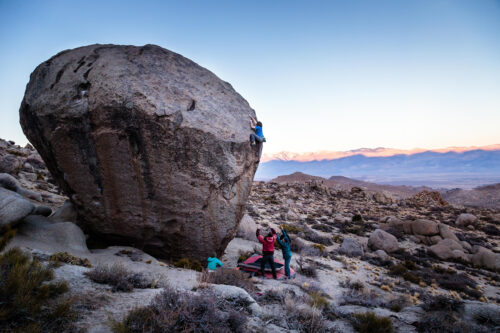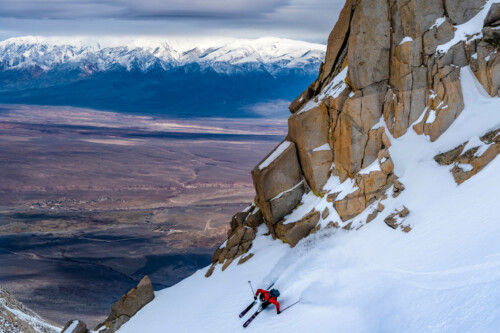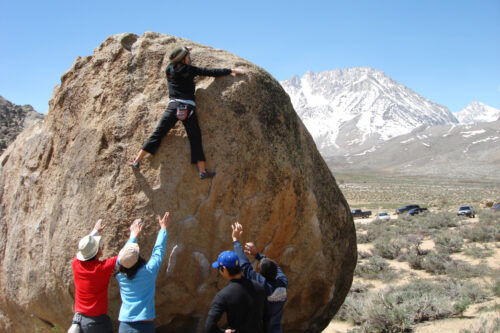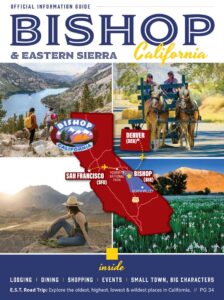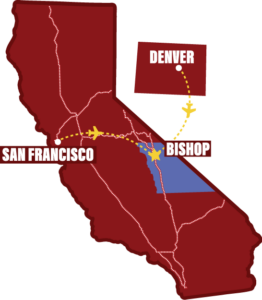Conditions Report by Climbing Rangers:
WEEKLY CONDITIONS REPORT:
@bishopclimbingrangers
Pine Creek is getting a new loo. The Pine Creek Vault Toilet got approved by the Access Fund, in partnership with the Bishop Area Climbers Coalition. YAYY.
Cultural Sites
Never touch, remove, or share locations of archaeological sites. It gives climbers a bad name and is prohibited by law. Review the How to Recreate Responsibly in Payahuunadü, compiled by the Environmental Management Office of the Bishop Paiute Tribe.
Other Local Conditions Reports
For more information on current conditions, please visit ladwp.com/EasternSierra.
Real-time data on flow levels are available online: https://wsoweb.ladwp.com/
Ice Climbing Conditions Report by Sierra Mountain Guides
Backcountry Ski/Board Snow Conditions Report by SMG. This is NOT a backcountry avalanche advisory, which can be useful for recreational avalanche risk management. You will find the latest backcountry avalanche advisory at the Eastern Sierra Avalanche Center website.
🐍 Rattlesnake Season – Spring/Summer/Fall 🐍
Temps are rising, and rattlesnakes are on the move in the Eastern Sierra. Recent sightings have been reported in the Tablelands (Happiness & Sads), Buttermilks, Druids, and the Gorge.
Rattlesnakes aren’t aggressive, but they will defend themselves if startled. That “ch-ch-ch-ch” you hear? It’s just their way of saying: “Hey, I’m here—please don’t step on me.”
Snakes play a vital role in our ecosystem. Give them space and respect, and they’ll usually return the favor.
Stay safe out there: 👀 Watch where you step, sit, or place your hands. 🚶 Stay on trails—avoid walking through tall grass or brush. 🐶 Keep dogs leashed and close. 🎧 Skip the headphones—you’ll want to hear that warning rattle. 🪨 Approach boulders, ledges, and cracks with caution.
💉 Dog owner? Rattlesnake avoidance training and vaccines are available for dogs.👉 Bishop Veterinary Hospital is hosting a training on 4/16—call them for more info.
🚨 If bitten:
▪️Stay calm and call 911 immediately.
▪️Get to medical care as quickly as possible.📍 Northern Inyo Hospital — 150 Pioneer Ln, Bishop, CA
▪️Keep the bite below heart level on the way to the hospital.
Do NOT: ✖️ Apply ice or heat ✖️ Try to suck out the venom ✖️ Take medication, alcohol, or caffeine ✖️ Use a tourniquet
Be alert, stay safe, and enjoy the spring season responsibly.
 Restoration Rundown: A Stewardship Series
Restoration Rundown: A Stewardship Series 
How can we keep the stoke high and the impact low?
☕️Bishop Climbing Rangers
Sierra Forever
ROAD CONDITIONS 📣
**For the latest information on conditions on the California State Highway System, please visit the Caltrans QuickMap website at quickmap.dot.ca.gov or download the app to your smartphone. You can also call the Road Condition Hotline at 1-800-427-ROAD (7623). Tioga Pass closure information – access to Yosemite.
Volcanic Tablelands Geology
The martian rocks, deep canyons, and diversity of life in the otherworldly volcanic tablelands have inspired humans since first venturing into the area ~12,000+ years ago. Surprisingly, there is an incredible array of life in a place that appears rather hostile. While the desert feels tranquil today, it was born from a catastrophic volcanic explosion 🌋 more violent than any eruption humanity has witnessed. 767,000 years ago, the Long Valley Caldera erupted and 25 cubic miles of blazing hot rhyolite tephra rocketed high into the atmosphere and rained back down to Earth ☄️ in an apocalyptic scene. The crater left behind from this blast was 20 miles long, 10 miles wide, and over a mile deep. Ash from this explosion 💥 has been found as far away as Kansas and Nebraska! 125 cubic miles of blistering molten pumice raced out from the caldera soon after and smothered the landscape and all the life within it. Slowly, this material cooled and hardened into the rock we know as Bishop Tuff. Ash at the bottom compressed under the immense weight and became densely welded while the light fluffy material on top was stripped away by wind and rain. Slowly, life 🌸 came back to reclaim the area and the Owens River carved its way through the landscape, excavating the Owens River Gorge and the steep relief at the edge of the Tablelands. Faulting action combined with the eroding power of water sculpted the wonderful canyons of the Happy and Sad boulders where we climb today! 🧗

